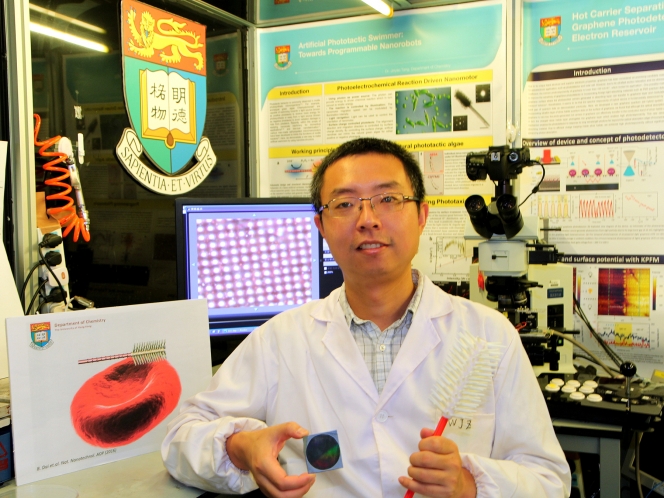
A team of researchers led by Dr Jinyao Tang from the University of Hong Kong has created the first of its kind, synthetic light seeking Nano-robots. These robots can help surgeons in dealing with tumor removal, cell targeted therapy and more precise medical operations.
Developing robots in nano-scale was a hurdle for scientists for a long time as the size of a nano robot is ~50 times smaller than the diameter of the human hair. It is a challenge to design and compact regular micro electronic components into that size. Also controlling the robots was another big issue which was done so far by small magnets that respond to magnetic field .
The Nobel Prize in Chemistry 2016 was awarded to three scientists for “the design and synthesis of molecular machines”. They developed a set of mechanical components at molecular level that can be compacted and arranged in complicated Nano-structures which will help to manipulate single cell molecules(DNA, proteins etc).
This led to further research by Dr Tang’s team, they worked to find a way to have more dominant control over the locomotion of the tiny robots. The breakthrough occurred when they discovered a way to make the robots respond to light in a very active manner. The robots tend to get drawn towards source of light and react differently to various spectrum of light. The team demonstrated their ability to “dance” or even spell a word under light control.

Dr Tang’s team worked three years to successfully develop the Nano-robots. It has a novel Nano-tree structure. The body is composed of two common, low-priced semiconductor materials: silicon and titanium oxide. These silicon and titanium oxide are shaped into nano-wire and then designed into a tiny Nano-tree hetero-structure.
Dr Tang said, “Although the current Nano-robot cannot be used for disease treatment yet, we are working on the next generation Nano-robotic system which is more efficient and bio-compatible.”
He further explained, “Light is a more effective option to communicate between microscopic world and macroscopic world. We can conceive that more complicated instructions can be sent to Nano-robots which provide scientists with a new tool to further develop more functions into Nano-robot and get us one step closer to daily life applications,” according to the a Hong Kong University press release.
























